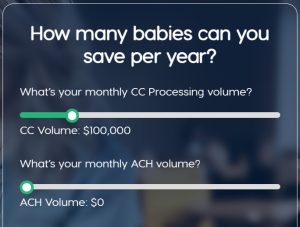Abortion Case Study: Justifying the Brutal Murder of Human Life
A particularly striking example of these psychological mechanisms appears in abortion justification, where individuals engage in behaviors that terminate human life while employing sophisticated mental processes to avoid confronting this reality. The following analysis examines the ten most common pro-choice arguments and categorizes them within the psychological fallacy frameworks identified above, revealing the self-justifying mechanisms at work.
The Brutal Biological Reality of Abortion
 Scientific evidence demonstrates that human life begins at fertilization, forming a new organism with unique DNA distinct from the parents. The embryo develops a heartbeat at 22 days after fertilization, its own circulatory system, and organs. Medical research confirms that the fetal heart begins beating as early as 5-6 weeks gestation, with cardiac activity detectable via vaginal ultrasound.
Scientific evidence demonstrates that human life begins at fertilization, forming a new organism with unique DNA distinct from the parents. The embryo develops a heartbeat at 22 days after fertilization, its own circulatory system, and organs. Medical research confirms that the fetal heart begins beating as early as 5-6 weeks gestation, with cardiac activity detectable via vaginal ultrasound.
Brain development begins remarkably early, with the first synapses forming in the spinal cord around the fifth week after conception. Research indicates that pain is a neuroadaptive phenomenon that emerges in the middle of pregnancy, at about 20-22 weeks of gestation, with fetal responses to noxious procedures evident by 15-16 weeks gestation.
Top 10 Pro-Choice Arguments and Their Psychological Fallacies
-
“My Body, My Choice” – Euphemistic Labeling and Dehumanization
The Argument: Women have the right to abortion because they get to choose what happens to their bodies. Bodily autonomy refers to one’s right to make independent decisions involving their body without outside interference.
 Psychological Mechanism: This represents classic euphemistic labeling from moral disengagement theory, where the use of sanitized language obscures the moral weight of the action. The phrase deliberately ignores the second body involved.
Psychological Mechanism: This represents classic euphemistic labeling from moral disengagement theory, where the use of sanitized language obscures the moral weight of the action. The phrase deliberately ignores the second body involved.
Evidence of Failure: A fetus is not part of a mother’s body. There are two bodies present, both deserving of protection and human rights. The preborn child has different DNA, possibly a different sex or blood type, and fits all other criteria for existence as a distinct organism. One’s rights cannot and should not elevate above another’s.
-
“Fetus Is Not a Person” – Arbitrary Categorization and Dehumanization
The Argument: Personhood begins at birth or viability outside of the womb. A human life form should qualify as a person when consciousness, reasoning, self-motivated activity, ability to communicate, and self-awareness are present.
Psychological Mechanism: This represents moral disengagement through victim dehumanization, where victims are viewed as subhuman or stripped of human qualities. It also involves arbitrary categorization as a rationalization defense.
Evidence of Failure: Biology backs up the pro-life argument, as the fetus is a distinct human being. If we deny personhood to preborn children, then we open the door to discrimination based on characteristics such as location, age, or ability. Newborns, individuals with severe cognitive disabilities, and people in comas would fail these personhood criteria, yet we don’t permit killing them.
How Many Babies Can You Effortlessly Save This Year?
Take 30 Seconds to find out. Go to the Baby Saving Calculator at Pro Life Payments. Pro Life Payments is the for-profit arm of the pro-life movement. Pro-Life Payments is reducing abortion in America by turning customer financial transactions into pro-life funding. We give 15% of gross revenue to Pro-Life organizations. Payments is transitioning donation platforms, credit card processing and peer to peer payments into a funding engine for the pro-life community. Pro-Life Payments is providing customers with the alternative to the abortion-supporting financial institutions and payment processors they are supporting today.
-
“Rape and Incest Exceptions” – Advantageous Comparison and Emotional Manipulation
The Argument: Rape is a heinous crime and its consequences for women are tragic. It would be fundamentally unjust to impose the significant consequences of that act if they can be avoided.reddit
Psychological Mechanism: This employs advantageous comparison from moral disengagement theory, comparing abortion to the “worse” crime of rape. It also uses emotional manipulation and external locus of control by blaming circumstances for the moral choice.
Evidence of Failure: The circumstances of conception may have been criminal, but the life of the newly-created human being is just as valuable as any other person’s. We do not put criminal’s innocent children to death in our culture; it simply isn’t done. Abortion did not solve their problems; it merely created additional ones, as women report years of physical, emotional and psychological difficulty following their abortions. Studies show that rape and incest exceptions aren’t designed to help survivors access abortion care.
-
“Saves Mother’s Life” – Misrepresentation and False Dichotomy
The Argument: Pregnancy complications may be so severe that abortion is the only measure to preserve a woman’s health or save her life.
Psychological Mechanism: This involves misrepresentation of outcomes and creation of false dichotomies where abortion is presented as the only solution to maternal health problems.
Evidence of Failure: Abortion is never medically necessary. It does not treat or solve any pregnancy-related complication. When a woman’s life is at risk in pregnancy, preterm delivery may be used as a lifesaving medical intervention to preserve the life of both mother and child. Each of these states permits abortion in those rare and heartbreaking circumstances when it is necessary to save the life of a pregnant woman. The goal is to fight to save both patients.
-
“Economic/Poverty Arguments” – Utilitarian Rationalization and System Justification
The Argument: 73% of women undergoing an abortion said not being able to afford a baby now was a reason for the abortion. Denying access to abortions increases poverty.
Psychological Mechanism: This represents utilitarian rationalization where economic benefits are used to justify killing. It also involves system justification where individuals support harmful economic structures rather than addressing root causes.
Evidence of Failure: Whether a mother is financially affluent or poor does not add to or diminish the life of a child. It is a great evil that our society promotes the death of children over support for women. Surveys indicate that low-income women are more against abortion than other women. Yet economic realities pressure many to act against their convictions. By offering “free” abortions, the government effectively places its thumb on the scale to favor death for the unborn child.
-
“Viability Outside the Womb” – Arbitrary Line Drawing and Motivated Reasoning
The Argument: Abortion should be allowed until fetal viability. Life begins at the stage when the foetus could survive outside the womb.
Psychological Mechanism: This involves arbitrary line drawing as a rationalization mechanism and motivated reasoning to find seemingly logical cutoff points that justify desired behavior.
Evidence of Failure: The viability rule is arbitrary because the capacity of a fetus to survive outside the womb says nothing about the value of the fetus. There is no definite diagnosis of viability and no test that can definitively determine whether a fetus could survive outside of the uterus. The arbitrary character of the viability rule is highlighted by evidence that viability can vary for similarly-situated fetuses based on race, gender and irrelevant behavioral and environmental factors. Exactly how the six-inch trip down the vagina into the light of day bestows something so special on the child is not explained.
Christian Merchant Card Services
Pro Life Payments is the for-profit arm of the pro-life movement. Pro-Life Payments is reducing abortion in America by turning customer financial transactions into pro-life funding. We give 15% of gross revenue to Pro-Life organizations. Payments is transitioning donation platforms, credit card processing and peer to peer payments into a funding engine for the pro-life community. Pro-Life Payments is providing customers with the alternative to the abortion-supporting financial institutions and payment processors they are supporting today.
-
“Fetal Abnormalities” – Selective Empathy and Ableist Discrimination
The Argument: Patients may decide to end their pregnancies through abortion when there are fetal conditions for which survivability will be poor. It would be compassionate to terminate pregnancies with severe abnormalities.
Psychological Mechanism: This demonstrates selective empathy and ableist discrimination disguised as compassion. It employs moral justification by claiming to prevent suffering.
Evidence of Failure: This argument essentially claims that people are better off dead than disabled, which is fundamentally discriminatory against people with disabilities. Many of these fetal anomalies are rare, and predictions about quality of life are often inaccurate. A review of 10 years of hospital data indicated that 40% of abortions are associated with fetal abnormalities, suggesting many healthy children are being killed based on imperfect testing.
-
“Unwanted Pregnancy/Quality of Life” – Consequentialist Rationalization
The Argument: It is best for a child to not be born at all than to be born hated, to a mother who is forced to have him because she has no choice. Unintended pregnancy often leads to abortion.
Psychological Mechanism: This represents consequentialist rationalization where future negative outcomes are used to justify present killing. It also involves paternalistic justification claiming to act in the child’s “best interest.”
Evidence of Failure: This argument assumes people can predict future happiness and that death is preferable to potential hardship. In severe situations of financial and emotional deprivation, children whose conceptions had been mistimed or unwanted may be at higher risk of physical abuse or neglect, but this does not justify killing them before birth. Many “unwanted” pregnancies become wanted children, and adoption provides alternatives.
-
“Abortion is Healthcare” – Euphemistic Labeling and Medical Authority Appeal
The Argument: Induced abortion is an essential component of women’s health care. Abortion is a safe medical procedure that protects lives.
Psychological Mechanism: This uses euphemistic labeling to sanitize killing by calling it “healthcare” and employs appeal to authority by citing medical organizations.
Evidence of Failure: If an induced abortion is healthcare, then the procedure must meet the requirements of being medically necessary. The service must be required to prevent, diagnose, or treat an illness, injury, or disease. Pregnancy is neither an illness nor a disease. Healthcare heals; abortion kills. The best health care is provided free of political interference in the patient-physician relationship, but this ignores the third patient—the child.
-
“Mental Health Benefits” – Motivated Misremembering and Outcome Minimization
The Argument: Having an abortion is not linked to mental health problems, but restricting access to safe, legal abortions does cause harm. Getting a wanted abortion does not cause significant psychological problems.
Psychological Mechanism: This involves motivated misremembering where negative consequences are minimized or reframed, and outcome locus manipulation where harmful effects are attributed to external factors rather than the abortion itself.
Evidence of Failure: Abortion is consistently associated with elevated rates of mental illness compared to women without a history of abortion. Every woman—whatever her age, background or sexuality—has a trauma at destroying a pregnancy. Women denied an abortion were more likely than were women who received an abortion to experience economic hardship and insecurity lasting years, but this doesn’t address the moral trauma of killing one’s child.
The Psychological Architecture of Abortion Justification
These arguments demonstrate how each justification makes the next one easier, creating psychological momentum toward accepting the killing of human life. The pattern reveals classic moral disengagement where individuals deactivate their moral standards through euphemistic labeling (“reproductive choice,” “healthcare”), moral justification (“preventing suffering”), and victim dehumanization (“fetus,” “clump of cells”).
The research shows that abortion supporters often acknowledge that there are two sets of DNA. Two sets of heartbeats. Two distinct humans, yet still justify killing one of them. This represents the sophisticated psychological architecture humans construct to protect themselves from the moral weight of their actions—even when those actions involve the deliberate ending of innocent human life.
Some abortion patients do not agree with abortion legality, and this subset could experience a degree of cognitive dissonance, demonstrating that many people engaging in abortion know it contradicts their stated moral beliefs. The pain is eased by avoiding thinking about the child that they could have had, perceiving the fetus as a non-human being—a textbook example of the psychological mechanisms described throughout this analysis.
The case of abortion reveals how sophisticated psychological defenses can enable individuals to justify even the most extreme violations of their stated moral principles, demonstrating the remarkable capacity of the human mind to rationalize behaviors that would otherwise be recognized as the brutal taking of innocent human life.

